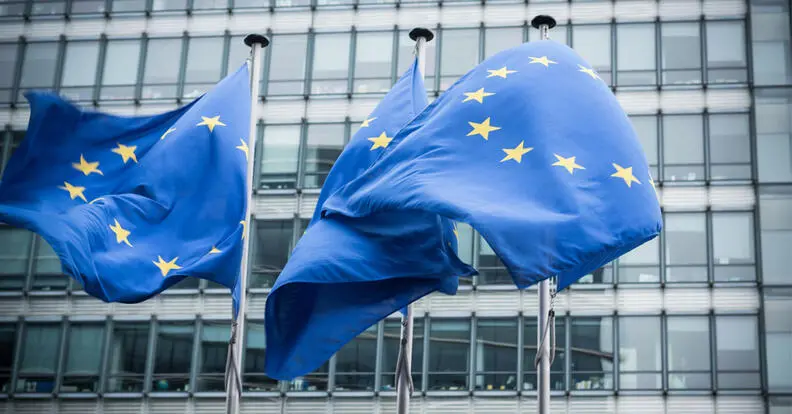Introduction to e-Invoicing: Streamlining Business Transactions

In today’s fast-paced VAT landscape, a game-changing evolution has unfolded – ‘electronic invoicing’ or e-invoicing. Persuaded by tax mandates, organizations are putting a stop to paper-based invoices to make way for seamless transactions. This transformation is reshaping organizations, minimizing errors, and expediting the entire invoicing process.
This blog delves into e-invoicing’s intricacies, focusing on tax departments at the forefront of this transformation. We’ll explore e-invoicing’s global processes, country dynamics, and the pivotal role of standards. Discover how it fuels business efficiency, slashes processing times, and reduces errors, benefitting businesses at every level.
Delve into e-invoicing’s impact on cross-border trade, the why behind its introduction, and the hurdles faced during implementation. Look ahead to emerging trends like blockchain integration and AI infusion.
E-invoicing Processes in Different Countries: e-Invoicing in the EU
Europe has a strong approach in the world of e-invoicing. Countries like Sweden, Norway, Denmark, Finland, the UK, Austria, Belgium, France, and Germany have implemented the Peppol network into their e-invoicing and procurement systems to facilitate cross-border trade and streamline digital reporting. Peppol is a standardized network for e-invoicing and electronic procurement. It’s designed to streamline cross-border trade and e-procurement processes.
Over in Spain, the government has played a hands-on role, making e-invoicing mandatory for public entities through the FACe platform. This government-operated platform was designed for receiving and processing e-invoices.
Germany has a slightly different approach, emphasizing security with a pursuit for electronic signatures to ensure authenticity. Meanwhile, Italy has a strong link between e-invoicing and tax compliance, enforcing digital invoices through the FatturaPA system. FatturaPA is overseen by the Italian Revenue Agency (Agenzia delle Entrate). It’s a central platform for the electronic exchange of invoices between businesses and government entities.
But despite these unique paths, there’s a common thread; the pursuit of reduced friction for processing transactions. Going electronic translates to less paperwork, faster processing, and fewer errors. Let’s dive into more detail on the differences and common practices of e-invoicing across the globe.
E-invoicing in the U.S.A.
The U.S. has been steadily testing and learning e-invoicing solutions, although its approach differs from the EU’s centralized systems like Peppol. E-invoicing adoption has largely been market-driven. Businesses are raising their awareness of the efficiency gains, cost savings, and reduced environmental impact associated with e-invoicing.
Unlike Europe where Peppol has been widely adopted, some federal and state agencies are testing e-invoicing systems to improve their procurement processes and reduce paperwork. As standardization and government initiatives continue to evolve, the U.S. e-invoicing landscape is likely to become more streamlined and accessible.
Impact on Business: Efficiency and Cost-Savings
Embracing e-invoicing brings about a transformative impact on businesses, enhancing efficiency and delivering significant cost savings. Here are a few ways e-invoicing improves efficiency and increases cost-savings:
- Streamlined Processes: The automation and standardization inherent in e-invoicing reduce manual data entry and the need for paper-based documentation. This simplifies the invoicing process, from creation to delivery, significantly streamlining operations. With e-invoices, businesses can generate, send, and receive invoices with ease, saving valuable time and resources.
- Faster Payment Cycles: E-invoicing accelerates payment cycles by reaching their recipients faster, allowing for quicker processing and approval. This means businesses can access their revenue more swiftly, improving cash flow management and potentially reducing the need for loans or credit.
- Error Reduction: Manual data entry is prone to errors, which can lead to payment delays and disputes. E-invoicing systems help eliminate these mistakes through automation and validation checks, ensuring accuracy in invoicing. This minimizes costly back-and-forth communications and the risk of delayed payments.
- Cost Savings: The transition to e-invoicing often involves reduced paper, postage, and administrative costs. Fewer physical documents need to be printed, mailed, and stored. Additionally, businesses save on labor costs associated with manual invoice processing. The cumulative effect of these savings can be substantial.
- Enhanced Data Insights: E-invoicing systems provide valuable data analytics and reporting capabilities. Businesses can gain insights into their invoicing patterns, the payment behavior of clients, and other financial metrics. These insights can inform strategic decisions and help optimize financial processes.
- Improved Supplier Relationships: Prompt and accurate e-invoicing contributes to healthier supplier relationships. Suppliers appreciate faster payments, and efficient invoicing can help strengthen these partnerships. Moreover, e-invoicing can lead to transparent and frictionless financial transactions, fostering trust between parties.
In general, e-invoicing’s impact on businesses is transformative. It enhances operational efficiency, shortens payment cycles, reduces errors, and generates significant cost savings. Beyond the financial benefits, e-invoicing offers valuable data insights and promotes the modernization of invoicing processes.
Challenges and Considerations: Adoption and Implementation
When it comes to transitioning to e-invoicing, tax professionals and businesses encounter several critical considerations. Firstly, there are the challenges of change management; shifting from traditional invoicing to electronic methods demands a change in mindset and workflow.
Another consideration is interoperability; ensuring your e-invoicing system can seamlessly communicate with those of your business partners is key. Incompatibility can lead to communication breakdowns and cost delays.
Legal and regulatory compliance is a paramount concern. Different countries and regions have specific regulations governing e-invoicing. Failing to be compliant can lead to legal complications, therefore staying informed about evolving tax regulations, data security standards, and e-invoicing mandates is essential.
To ensure a seamless adoption and integration process, it’s necessary to start with a comprehensive assessment of your business needs. Understanding your invoicing volumes, complexities, and industry-specific requirements will guide you in selecting the best e-invoicing service provider.
Conclusion: Embracing the Digital Transformation
E-invoicing stands as a pivotal element in the ongoing digital transformation of business practices within the EU. It offers substantial benefits to businesses, tax professionals, and governments alike. From streamlining operations to accelerating cross-border trade and enhancing compliance, the advantages are undeniable.
In essence, e-invoicing is not only a modernization of invoicing practices, it is a strategic move towards increased efficiency, transparency, and effectiveness in the digital age. Embracing the digital transformation empowers businesses and tax professionals to navigate the complexities of the EU landscape with agility and confidence, ultimately contributing to economic growth. To help your tax team align with e-invoicing requirements, have a look at the Vertex e-Invoicing solution.
Disclaimer
Please remember that the Vertex blog provides information for educational purposes, not specific tax or legal advice. Always consult a qualified tax or legal advisor before taking any action based on this information. The views and opinions expressed in the Vertex blog are those of the authors and do not necessarily reflect the official policy, position, or opinion of Vertex Inc.
Blog Author
E-Invoicing Requirements and VAT in the Digital Age
Learn more about e-invoicing mandates in the European Commission's VAT in the Digital Age (ViDA) proposal.
LEARN MORE
